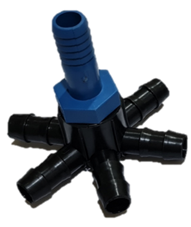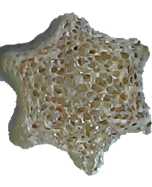RAS is a highly intensive form or aquaculture. It
works on the principal of zero or almost zero water exchange. In that sense it
is the opposite of biofloc.
In biofloc or BFT, water is not exchange and
probiotics are added so that microorganisms convert the sludge and waste, thus
reducing the nitrates, nitrites, phosphates, ammonia etc in the water.
RAS is now being adapted by aqua farmers across the
world. In fact many fish farmers are now moving away from standard designs
given by suppliers of RAS system and making their own design. Whatever the
design that maybe made by the farmer or supplier, there are 4 main elements in
RAS
-
Water exchange, anywhere from 100%
water exchange once in 24 hours to once in a week
-
Drum filter to remove physical
impurities
-
Bio filter to balance the chemicals ,
reduce ammonia, phosphates etc.
-
Aeration in the tanks and also in the
biofilter
RAS is an innovative method that conserves water and
reduces environmental impacts. Among the various components that make up a
successful RAS, biofilters play a pivotal role, and the importance of aeration
within these biofilters cannot be overstated.
Biofilters is the backbone of any RAS system and it is
responsible for maintaining water quality. The biofilter contains bacteria that
convert the sludge and waste, breakdown the nitrite and ammonia and keep the
water clean. They are nature’s filters.
To keep these bacteria growing and functioning well,
they also need aeration. Hence aeration in the biofilter is of paramount
importance. If the water flow rate calculations – the duration in which the
water is to be exchanged 100% in the system – are mismatched with the quantity
of bacteria and the aeration provided to the bacteria in the biofilter, the
results can be catastrophic.
In such a case, the biofilter is not able to handle
the excess load of ammonia, nitrites, etc. and their quantity starts increasing
exponentially.
Insufficient aeration can lead to oxygen depletion
within the biofilter, creating anaerobic zones. In these zones, different
groups of bacteria can proliferate, including those that convert nitrates back
into harmful ammonia. This phenomenon, known as denitrification, can reverse
the nitrification process, reducing water quality and posing a threat to the
health of the aquaculture system's inhabitants. Adequate aeration helps prevent
the formation of anaerobic zones, maintaining a stable and healthy biofilter
environment
A good RAS system needs to incorporate in its design 3
elements of the biofilter
-
Which bacteria culture to have in the
bio filter – this will depend on the species of fish in the culture
-
What is the size of the bio filter –
this will depend on frequency of water exchange, how long should 100% exchange
take
-
What is the aeration to be provided
in the biofilter – this will depend on the initial quantity of bacteria culture
that you are adding in the biofilter and the MBBR media used
AirOxi offers
very high intensive aeration system for the biofilters. When water is aerated,
it allows oxygen to diffuse into the biofilter media, creating an oxygen-rich
environment where the bacteria can efficiently carry out nitrification. Without
proper aeration, the biofilter media could become oxygen-deprived, leading to a
decline in bacterial activity and reduced nitrification efficiency.
The biofilter
aeration system offered by AirOxi has 3 parts
-
AirOxi spider – with 6 way connector
with one inlet and 6 outlets and without using AirOxi tube
- Special MBBR media that floats and bounces on water developed by AirOxi
-
Blower to provide air through the 6
way spider
Apart from supporting beneficial bacteria,
aeration also directly benefits fish health in RAS aquaculture systems. Fish
require well-oxygenated water to breathe and grow optimally. If oxygen levels
drop, fish can become stressed, leading to reduced immunity and increased
susceptibility to diseases. Proper aeration in the biofilter ensures that
oxygen is continuously supplied to the entire aquaculture system, supporting
fish health and growth.
In conclusion, a good RAS system needs a
well-designed biofilter and proper aeration needs to be given to this filter.
This is the heart of the system and this is what separates RAS from other
technologies of aquaculture.
Contact us at: +91 9652122060 or mail us at: info@airoxi.com
#envirment #everyone #airoxitube #airoxi
#airoxidiffuser #airoxiproducts #aquarium #aquaculture #fishing #fishingfarm
#shrimp #shrimptank #fishtank #tank #RAS #aeration #aerationsystem #bubbles
#bubble #post #postoftheday #oxygenation #hatcheries #shrimpfarm #aqualife
#blower #microbubblegenerator #transportationaeration #turbineblower
#submersibleaerator #biofloc #growoutponds #nurseries #oxygenconcentrator
#diffuser





